Request Demo
Last update 08 May 2025
Marrow infiltrating lymphocytes(WindMIL Therapeutics)
Last update 08 May 2025
Overview
Basic Info
Drug Type TIL therapy |
Synonyms MILs, MILs™ - NSCLC |
Target- |
Action stimulants |
Mechanism T lymphocytes stimulants |
Therapeutic Areas |
Active Indication- |
Originator Organization |
Active Organization- |
Inactive Organization |
License Organization- |
Drug Highest PhaseDiscontinuedPhase 2 |
First Approval Date- |
Regulation- |
Login to view timeline
R&D Status
10 top R&D records. to view more data
Login
| Indication | Highest Phase | Country/Location | Organization | Date |
|---|---|---|---|---|
| Non-Small Cell Lung Cancer | Phase 2 | - | 01 Oct 2021 | |
| Small Cell Lung Cancer | Phase 2 | - | 01 Oct 2021 | |
| metastatic non-small cell lung cancer | Phase 2 | United States | 15 Oct 2019 |
Login to view more data
Clinical Result
Clinical Result
Indication
Phase
Evaluation
View All Results
Phase 1/2 | 26 | eprkhasylk(wgygnlvsxy) = fzsrlwhcuj zysxoapnbj (zuytdrsizn, kklqvynbnj - vjsmmvrpec) View more | - | 19 Dec 2018 | |||
Phase 1/2 | 25 | (fkkvhiusus) = Achieving at least a 90% reduction in disease burden significantly increased the progression-free survival (25.1 months versus 11.8 months; P = 0.01). kxyetqvxhj (twypfeeayx ) | Positive | 20 May 2015 |
Login to view more data
Translational Medicine
Boost your research with our translational medicine data.
login
or
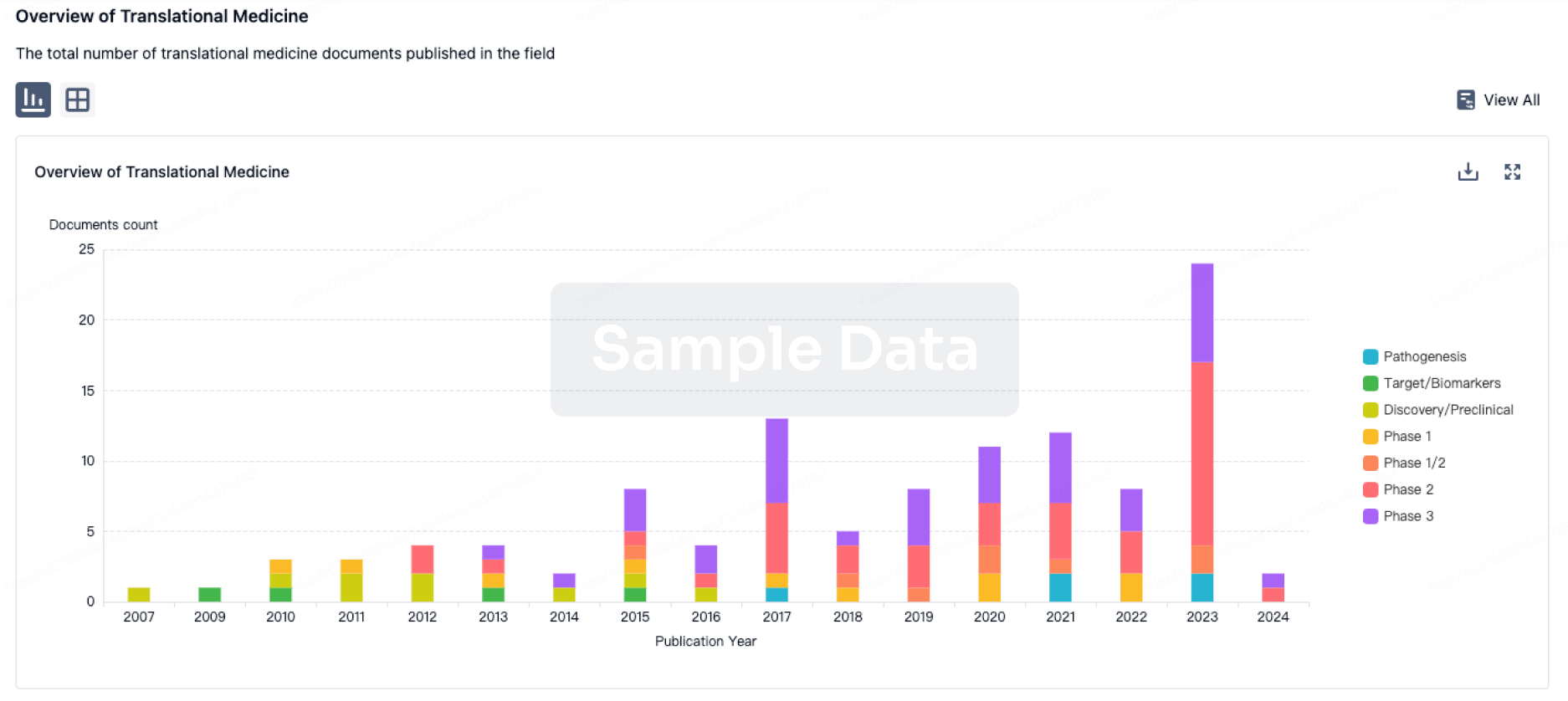
Deal
Boost your decision using our deal data.
login
or
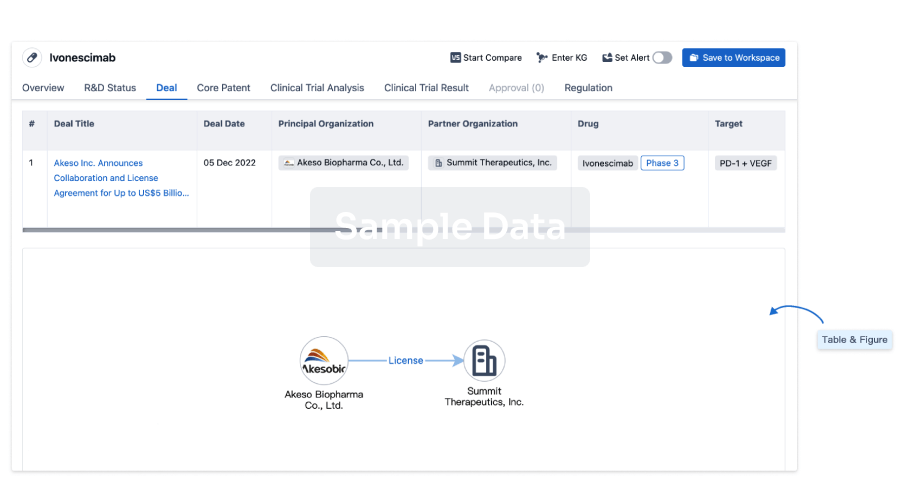
Core Patent
Boost your research with our Core Patent data.
login
or
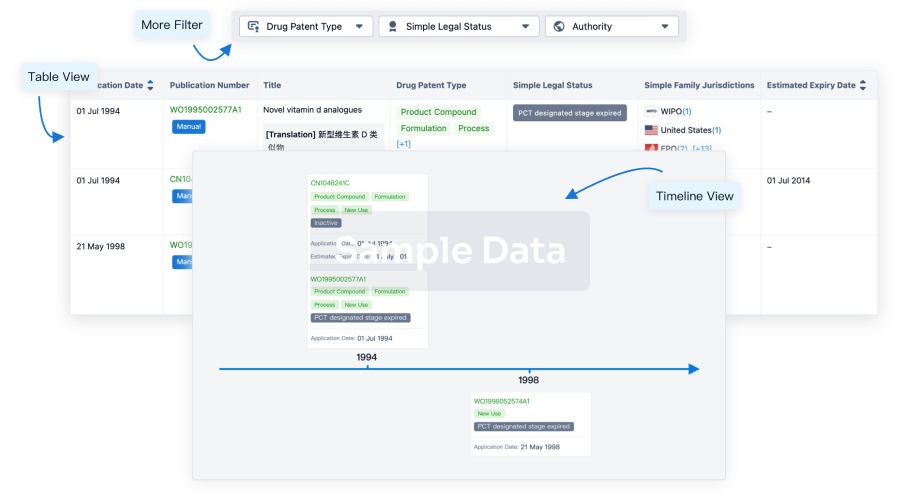
Clinical Trial
Identify the latest clinical trials across global registries.
login
or
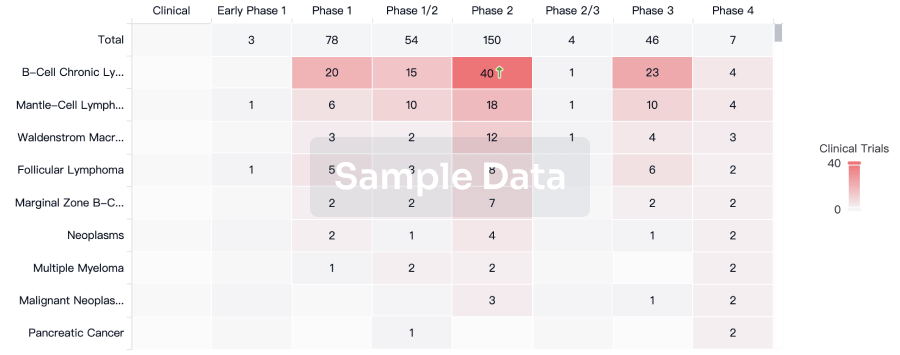
Approval
Accelerate your research with the latest regulatory approval information.
login
or
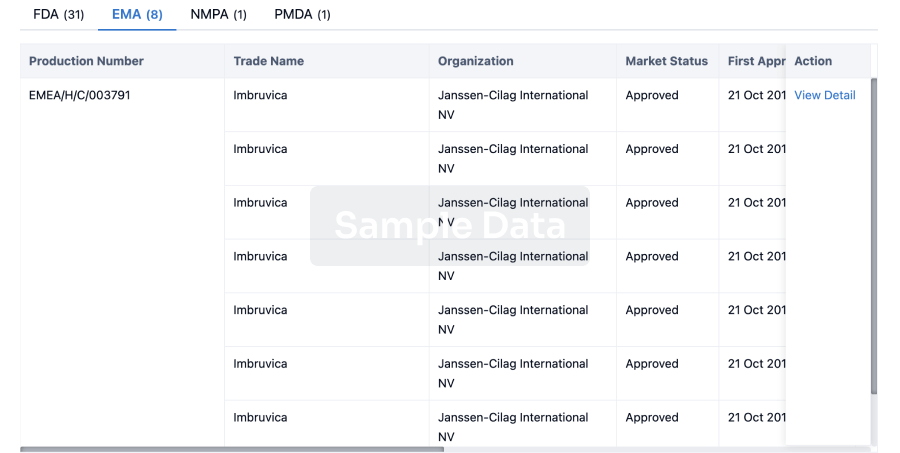
Regulation
Understand key drug designations in just a few clicks with Synapse.
login
or
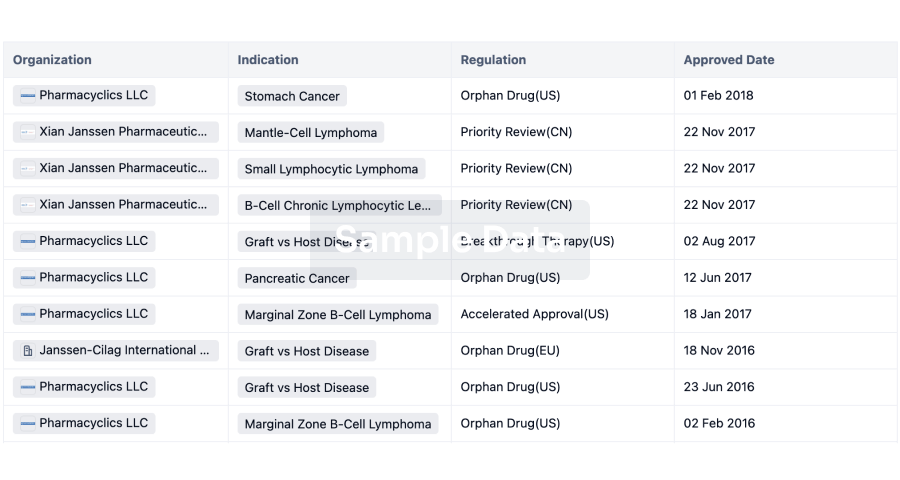
AI Agents Built for Biopharma Breakthroughs
Accelerate discovery. Empower decisions. Transform outcomes.
Get started for free today!
Accelerate Strategic R&D decision making with Synapse, PatSnap’s AI-powered Connected Innovation Intelligence Platform Built for Life Sciences Professionals.
Start your data trial now!
Synapse data is also accessible to external entities via APIs or data packages. Empower better decisions with the latest in pharmaceutical intelligence.
Bio
Bio Sequences Search & Analysis
Sign up for free
Chemical
Chemical Structures Search & Analysis
Sign up for free

